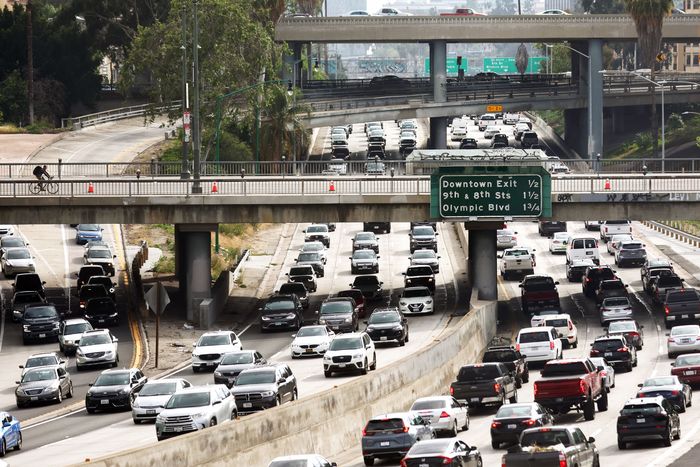
Connecticut just implemented its gas-tax holiday, and Maryland’s has been running since March 18. In California, Governor Gavin Newsom wants to send drivers $400 per car, while Chicago mayor Lori Lightfoot wants families making under $91,000 a year to register for a lottery to possibly receive $150 gas cards. A national plan has also been proposed in the House — Supporting Americans from Vehicle Energy Costs, or SAVE — that would give car owners making under $200,000 a year a monthly $300 tax credit. Yes, like the expired child tax credit — only your car is your child.
The problem is, even if you ignore the bad climate math being applied here (and you shouldn’t), high gas prices affect absolutely everything, from the cost of meals to the cost of deliveries. Life in general is more expensive right now, but the only people eligible for real relief are car owners. A better idea is taking some of that money and giving it to everyone to spend however they want. They can spend it on gas. Or they could spend it on groceries, rent, or — maybe — a commuter pass.
Pandemic-era protections like the child tax credit, free school meals, and enhanced unemployment benefits worked very quickly to reduce child poverty and child hunger. But they’ve all since expired after Republicans in Congress refused to renew them (and even many Democrats agreed that losing them didn’t present any major crisis). That was a huge mistake. One study showed that families who made under $35,000 used their child tax credit to pay for daily needs like food, clothing, rent, and utilities. Vehicle-related costs were much lower on the list. In fact, most families who received payments early in the pandemic ended up putting the money directly into the bank, the first time many of those same households had meaningful savings. So let’s do the same thing again, instead of funneling money to oil companies.
This way, people get to decide how they want to spend the extra cash they’ve been given, and policy-makers can take the meager consolation prizes they intend to offer nondrivers and instead use that money to make more investments in walking, biking, and transit. In Chicago, in addition to the gas-only cards, 100,000 people will get transit cards valued at $50 each. The $12.5 million in proposed funding still favors drivers — $7.5 million for gas, $5 million for transit — and the two payments are hardly equivalent in value ($50 won’t even buy a monthly CTA pass, and, let’s be honest, $150 of gas won’t get drivers very far, either). On the other hand, $12.5 million could pay for quite a few faster buses, safer bike lanes, and wider sidewalks.
In California, Newsom’s plan — which is not yet approved by the legislature — would end up sending a staggering $9 billion to drivers, with $2 billion to provide free transit for three months and $500 million to fund walking and biking projects. Those numbers should be flipped. Ditch the bad climate math and divide it up the other way. In California, $9 billion for walking and biking and transit would truly be transformative for the state. And dividing the remaining $2.5 billion among the state’s households would still be enough to send them $200 each. It’s not a lot of money, but that’s still true if it’s just meant to be spent on gas. The same goes for any plan presented nationally: Give everyone some cash, let them decide what they’re going to do with it. Then spend the bulk of this money making sure that families don’t have to choose between filling up the car with groceries or gas by giving them more options to get around. We can still call it SAVE: Saving Americans from Vehicle Expenditures.




